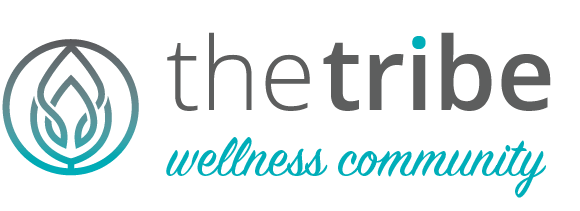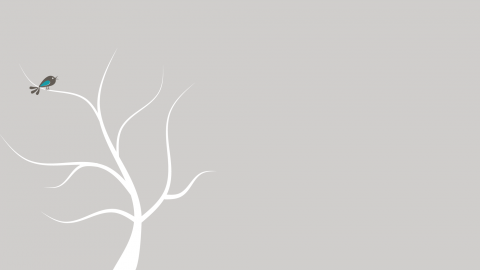Writing as a form of meditation. Hmmmm. OK. So I\'m meditating on all the little things flitting through my mind at the moment. Need to narrow it down. Been thinking about my mother (her birthday was yesterday) and how she once told me something like, as one ages and sees the pain, one can become greatful these earthly bodies don\'t last forever. She has Alzheimers. Her mental pain was unimaginable. She once said people treated her like she was stupid. Now she can\'t hardly put a sentence together so it\'s probably worse. And now I\'m looking for a nursing home for her. What an evil daughter I am. I should be taking care of her the rest of her life like people used to do. But she\'s so big and can\'t hardly move herself anymore. And she has insurance. And they can probably take better care of her than me. Excuses, excuses. Ok. Back to meditating. Clear the mind. White light. Reiki. Let things happen and quit fretting. Much better. Just don\'t do anything. Escapism? Anyway, here\'s the article…
It always comes back to the same necessity: go deep enough and there is a bedrock of truth, however hard—May Sarton
What, you may ask, is the similarity between writing and meditation? When I practice both regularly, they contribute significantly to my feelings of calmness, strength, and centredness. While the two are different practices, they work together to increase my awareness and enable me to act with intention. Meditation works at the psychophysiological level and the act of putting pen to paper—recognising and acknowledging my thoughts and feelings—heightens my consciousness. I write to plumb the depths of a problem and when I meditate, a solution often arises. Sometimes I have to wait longer for it because it is a \'soul solution\', one that arises from the depths of my being. I have learnt, over time, to trust this answer more than one that arises after a lot of conversation and rationalisation: the mind and body must work together and arrive at a consensus for any real resolution to occur.
We meditate to discover our own identity, our place in the scheme of things. Through meditation we acquire and acknowledge our connection to an inner power source that has the ability to transform our outer world. Writing is a way of forging this link. It helps us connect to our spirit, the source of wisdom within. Writing has provided me a way to reduce my dependence on other people and find my own source of happiness. It has presented me a pathway to a strong and clear sense of self: the act of putting my thoughts and feelings down on paper makes them real. Paying attention to my thoughts and feelings has made me more sensitive to other people\'s thoughts and feelings.
For me, writing is meditation, a pathway to acquiring greater insight and a tool to affect real change in my life. I have a series of notebooks of different sizes on my bedside table. There is my daily journal, a large spiral notebook, in which I make my jottings. My health journal is a diary, since I like to keep track of my exercise and eating routines on a weekly basis. One of my favorite notebooks, made of handmade paper, is my gratitude journal. In this I write down all the things I am grateful for in my life. The fourth journal, a small cloth-bound one, is my book of risks. In this I note down all the little leaps—risks taken in my day or week.
Creating a writing practice – Daily writing is a way of positioning ourselves in the movement of our lives, bringing us up to date with ourselves. While our lives appear to be uneventful on the outside, the range of content within is great. The mere fact of continuously writing entries, as done in a diary, is not enough to bring about a deep change. To achieve a real transformation, strong forces of energy must be generated. This can be done by a ritual. Open your notebook and place your pen by its side. Sit quietly and breathe deeply, letting your thoughts drop away. Let the calm overcome you. Your eyes will close naturally. When this happens by itself, the darkness you enter will be peaceful. Your attention will naturally turn inwards. This inward holding opens up the possibility of venturing into territories deep within. You may experience the surfacing of your feelings and perceive the realities of your personal life with a great force. When you have awakened the process of inner flow, pick up your pen and put it to paper.
Guidelines to direct your writing
• What you write must reflect the mental, emotional imagery taking place within you. It should focus on the essence of an experience, rather than the factual details. Try and keep your descriptions short and focused, although if a deep flow happens, and an outpouring of emotions with it, don\'t interrupt this.
• Describe your emotions, longings and anxieties at the beginning of the day; your body feelings when you got out of your bed. Heavy, light?
• When you were waking, what images filled your head? The twilight zone that which lies between waking and sleeping is a way of accessing thoughts and images otherwise difficult to access.
• Do you remember the dream you were having? What were your intuitions, fantasies, ideas? Did you have any sexual feelings? Describe all of these without censoring.
• What kind of relationships came about during the day? Were there experiences of love, frustration, anger?
• Recall the atmosphere, your moods, and the variation in your feelings. Note when your mind, body, or both become fatigued, or energised.
• Remember not to judge your emotions. Just record them. As you describe them you will see the pattern, and find that the external movement of events will fit around them and the day will shape itself accordingly. After making your entry, return to quietude. Let your breath become slow and
regular. You need to settle the emotions that had surfaced.
A variety of approaches can be used during writing practice. You can use one or many, depending on what you want from yourself.
Stepping stones – These are significant points of movement along the road of an individual\'s life, indicators of a development that continues despite the outward shifting of directions. These help us recognise the deeper-than-conscious goals towards which we are heading, and enable us to sift through the jumbled mass of our life experience. To find your own stepping stones, make a list of the most significant points in your life. The first stepping stone, for instance, may be the event of your birth, followed by your entry into a school, first romantic experience, etc. You can keep modifying the list till you come up with the true turning points of your life. This is effective in linking to the future direction your life will take. Stepping stones provide us with essential non-conscious life information.
Begin with the \'Now\': Where am I in my life today? Use your feelings to describe this. Look inward for images to surface. The idea is to look for a point of focus at which we position ourselves in the movement of our lives. Once you see this clearly, move to focus in. When did this period begin? Is there any single event that led to this image?
Imaginary dialogue – This is a popular technique used in many psychotherapeutic streams, including gestalt \'empty chair\' work. You can dialogue with people, works, your body, emotions, society, events, dreams, or inner wisdom. To enter the dialogue engage in a character sketch of your dialogue partner. Begin with a focusing statement about your current position within the relationship and a list of stepping stones for the dialogue partner. You may feel a bit strange in the beginning but respect the silence.
Me: I\'ve been really upset with you for the past week. You have had no time for me and this is hurtful.
He: I\'m sorry but I\'ve really been under pressure at work.
Me: That may be but I still feel that you do not give our relationship enough priority.
Dialogue with people provides insight into your own behaviour and can help clear a clouded position. This is also useful in enabling you to see another person\'s view point. Dialogue with events and circumstances is a good way of getting the true picture. If the event is not getting a job that you wanted, based on an inner belief such as \'I don\'t deserve it\', then this presents an opportunity to examine this belief. Dialogue with work—your current job, your future income
generating opportunity, a book you are writing—can help identify the cause of
blocks and energy sapping. Dialogue with the body—a part, an illness, sexuality, allergies, foods, pain—is a useful way to understand the body-mind link.
Writing letters to people to whom you are unable to express your feelings
directly provides a wonderful tool for catharsis, closure and clarity. Unsent
letters are useful for expressing deep emotion such as anger or grief and
completing unfinished relationships. Remember that they are not for sending so you can write without censoring or fear of hurting anyone.
The sixth sense – Proprioceptive writing is a form of inner emotional work or therapy that generates insight and catharsis through close examination of subjective experience. Proprioception is our sixth sense, the interface of the mind and body, as well as the source of emotional expression. Create a sacred space for your practice by lighting a candle and playing some soulful music. Baroque music is considered the most effective in proprioceptive writing but I work well with different types of instrumental music too.
The key in this practice is listening. Wait for your inner thoughts to become a voice you hear. Write what you hear for 25 minutes, on unlined paper. Your thoughts must appear as spoken words…



